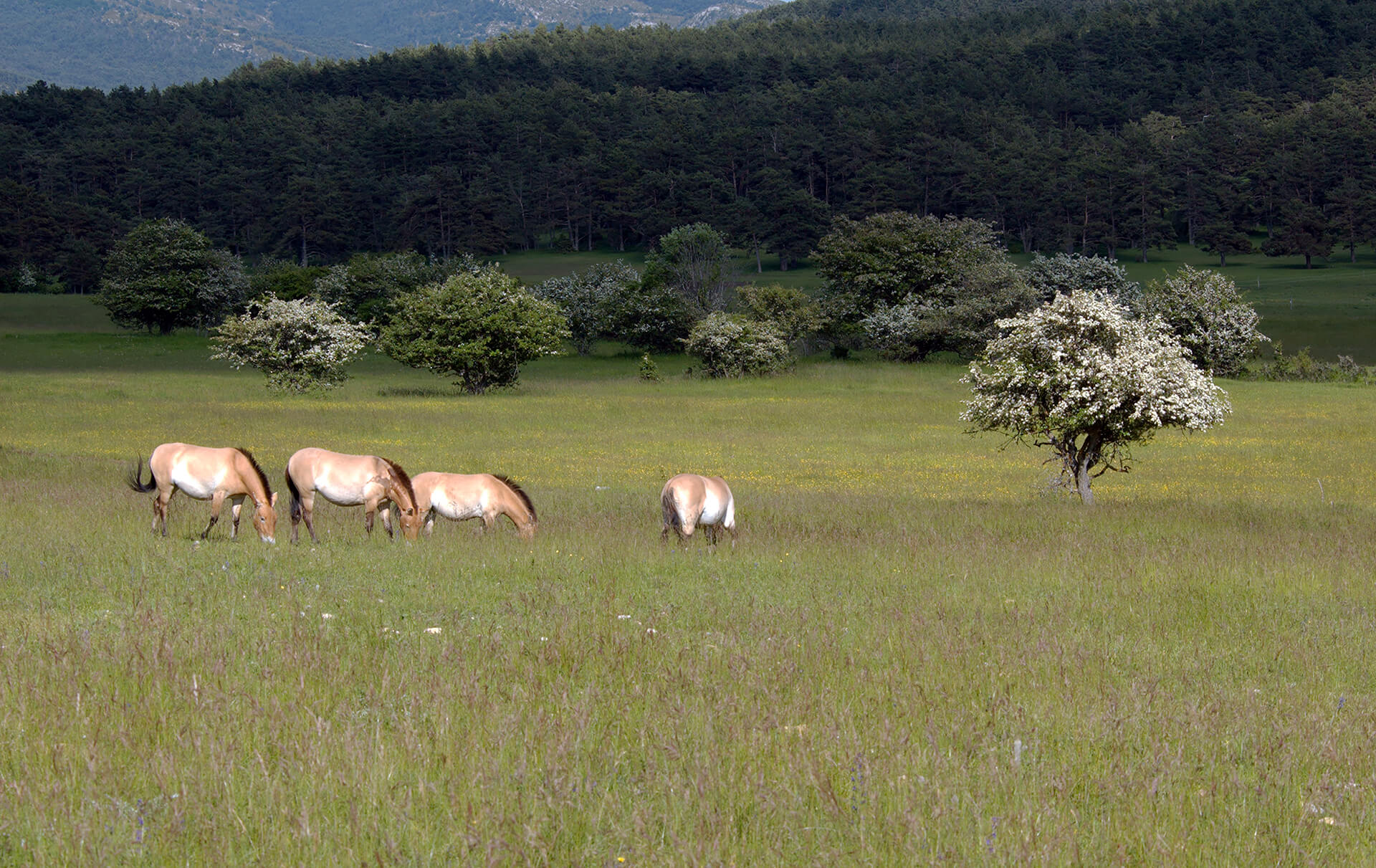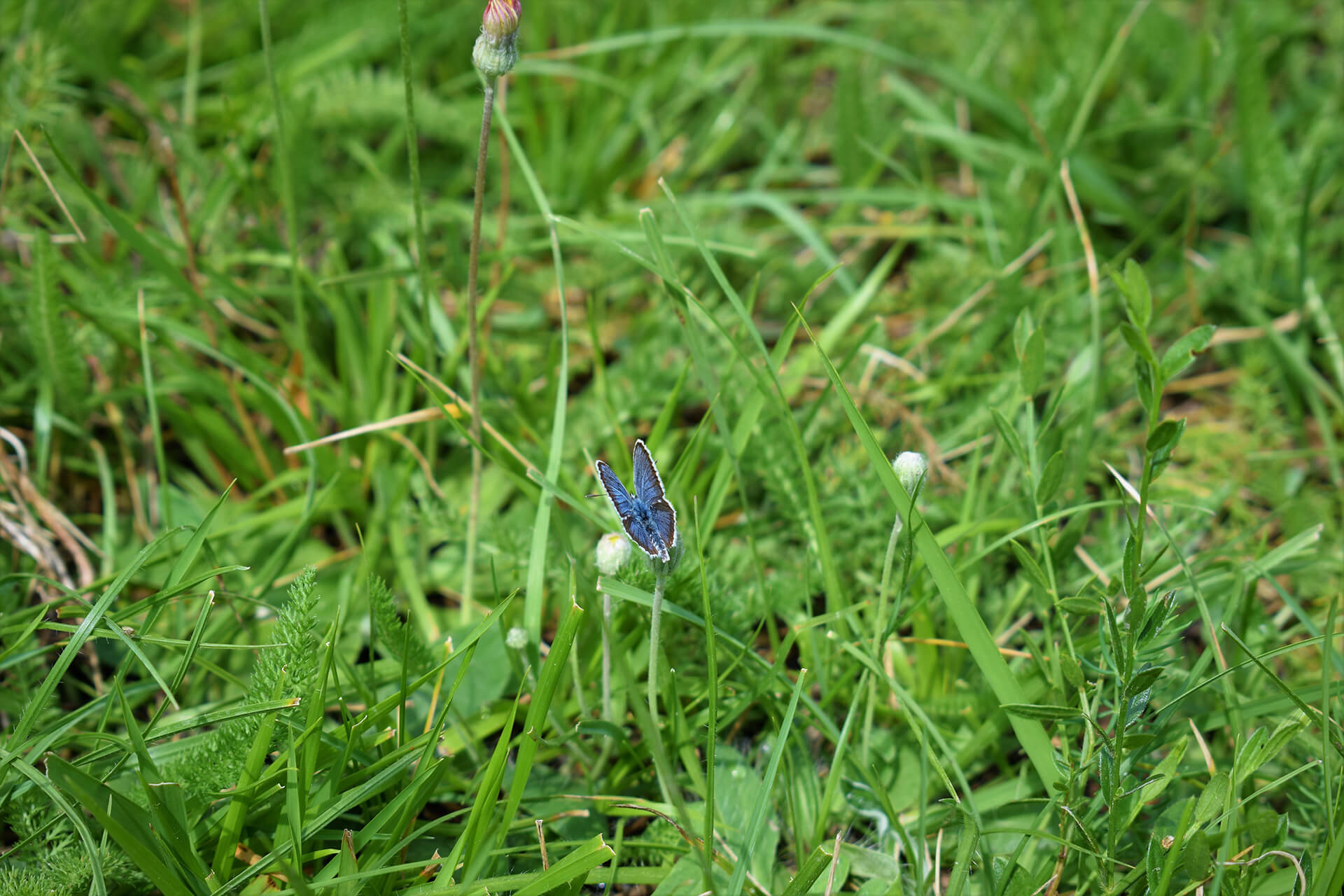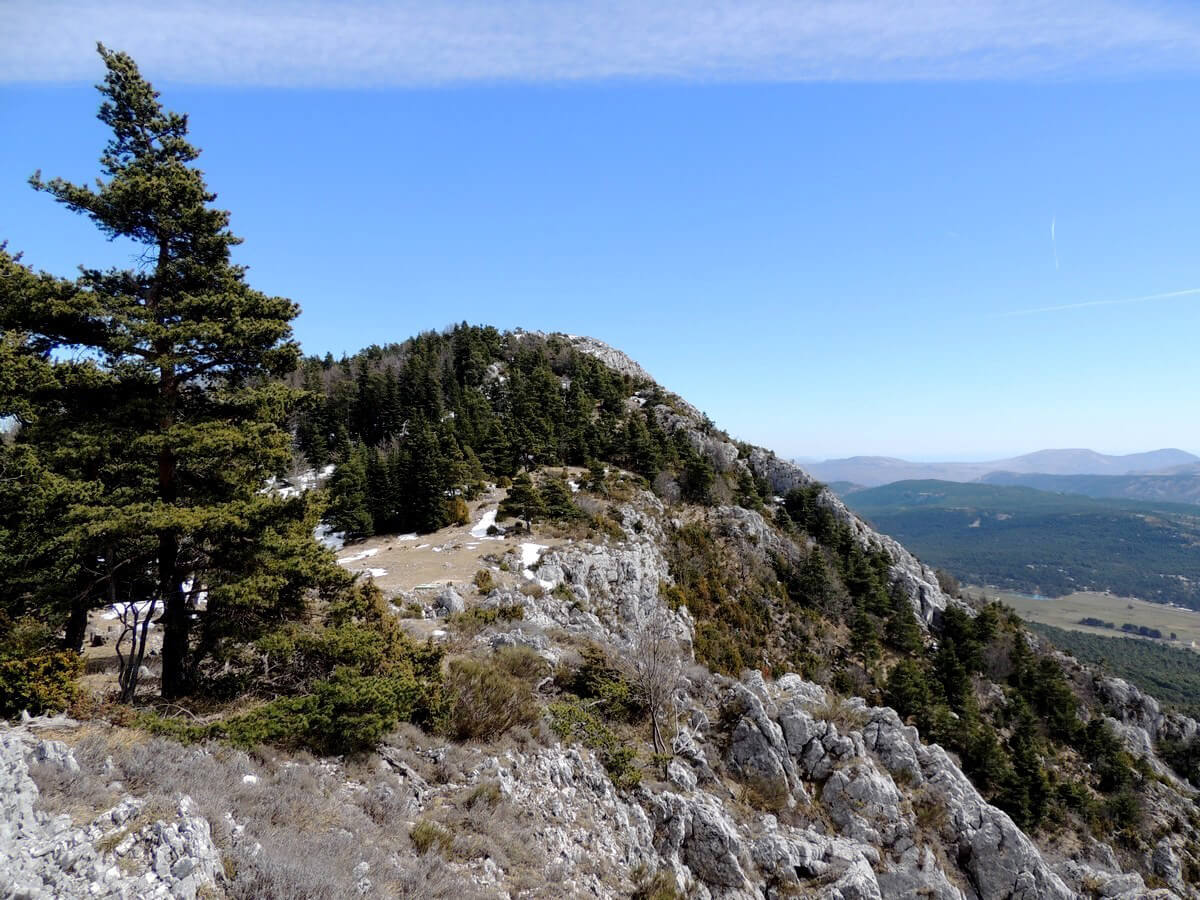The meadow, a place of life for females
Human occupation and agricultural activity are very old in our department (probably 6000 to 8000 years). With the arrival of the first populations of farmers (Neolithic revolution) coming from the Fertile Crescent, landscapes are transformed. Clearings are the first areas of culture. They are getting larger along the millenia, the forest receding ever further to the north and east of present-day Europe.
Grasslands in the Reserve were cultivated until 2003. At the height of the mowing season, their plant composition was reduced to 2 species: tall cocksfoot and alfalfa. Interesting for livestock, these species have proved dangerous for wildlife, especially bison, causing bloating (stomach fermentation) sometimes fatal.

Gradually, lawns have been transformed by a double process induced by buffalo and wild horse and wild boar, to a lesser extent by deer:
- Zoochoria (transport of seeds by animals),
- microbial enrichment of soils.
Large herbivores have a very surprising eating behavior. Unlike their domestic cousins, they are able to consume all (or almost all) the plants present, whether they are palatable or not. As a result, they roam the entire territory in search of food. Consuming here a plant which they will disseminate elsewhere the seeds, either after having transported them on their coat (epizoochorie), or by their dung (epizoochorie). Result: a mixture of 42 grasses, mainly grasses and wild legumes, instead of 2 unfortunate plants grown before the arrival of our garden tops!

Natural meadow: the return of butterflies
Large wild herbivores have, moreover, an “ancestral” digestive flora capable of digesting the most rustic plants (tall fescue, wood brachypod, lettuce …).
This digestive flora, eliminated in dung, has the particularity of developing in soils depleted by brutal farming methods (mechanization, chemical fertilizers, pesticides …). here, it degrades inert organic matter like pine needles and transforms dead soil into living soil (humification process – making humus from vegetable organic matter).
The Cliffs, a preserved territory
Cliffs, screes and rocky escarpments are unique habitats that host species with high heritage value.

On the Reserve, these habitats are home to Golden Eagle, Griffon Vulture and Monk Vulture, Peregrine Falcon, Grand Duke of Europe … for which cliffs are natural promontories, hardly accessible to humans …
But not for chamois that spend winter and spring here.
Largely spared over centuries by certain major disturbances (fires, deforestation, overgrazing, hunting, cultivation …) that have led, elsewhere, to the rarefaction of many species, they are often the last refuge for certain species such as the Tetra-Lyre (Lyrurus tetrix). A very sensitive species to deforestation and extensive grazing that destroys the low vegetation it needs, Tetra-Lyre has almost disappeared from the mountain of Bleine. We are currently working to strengthen this residual population.
